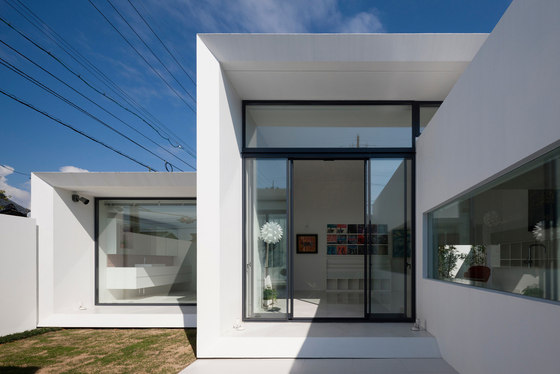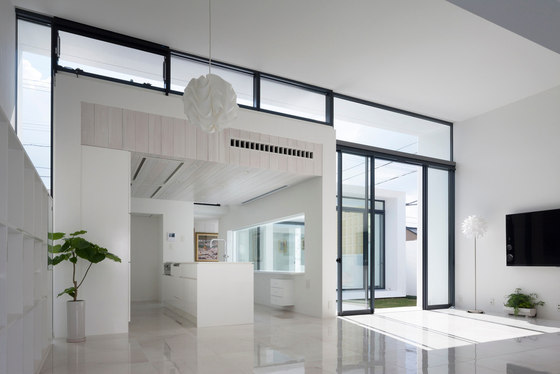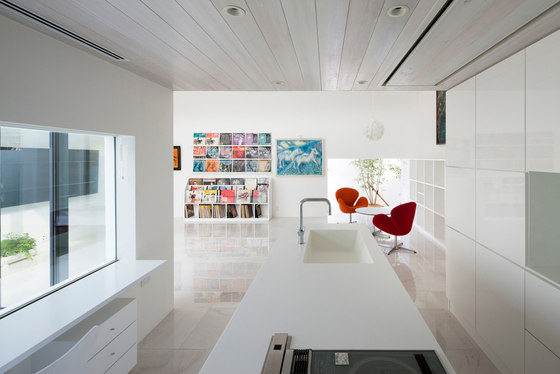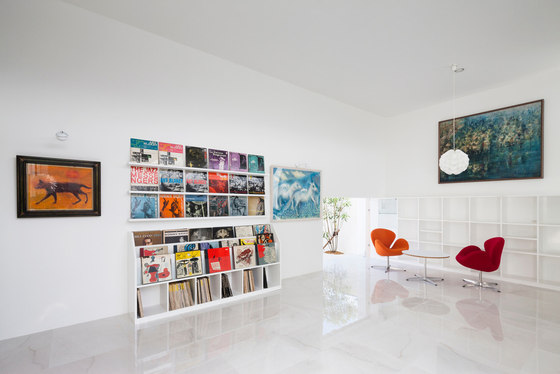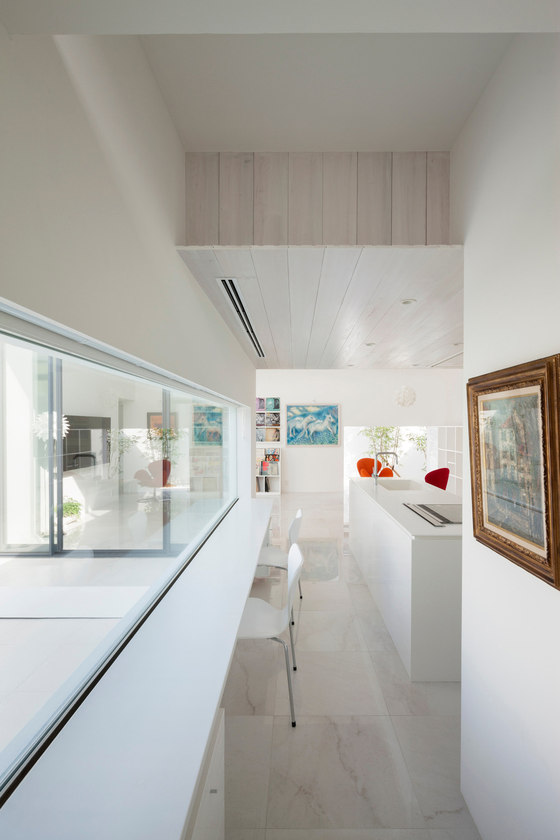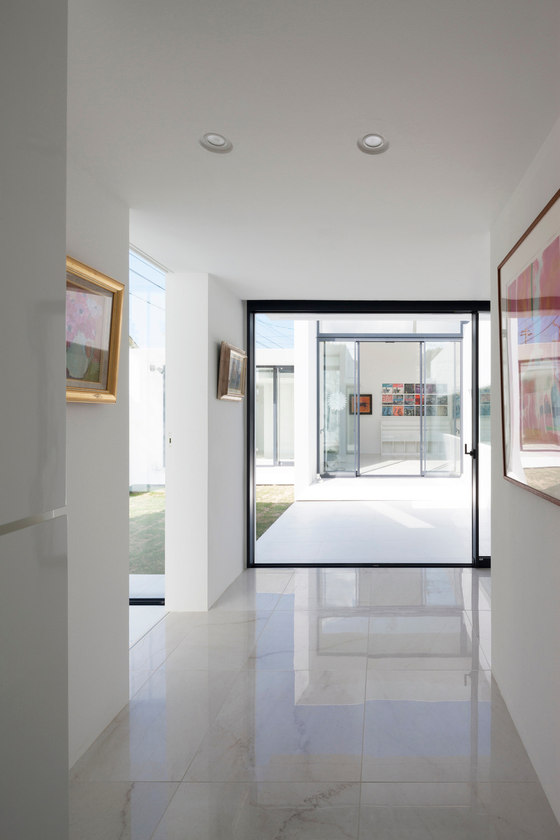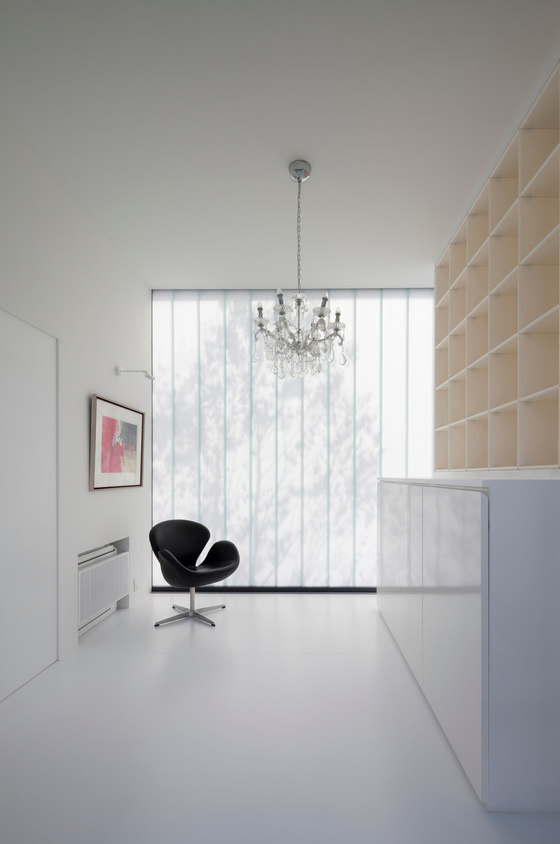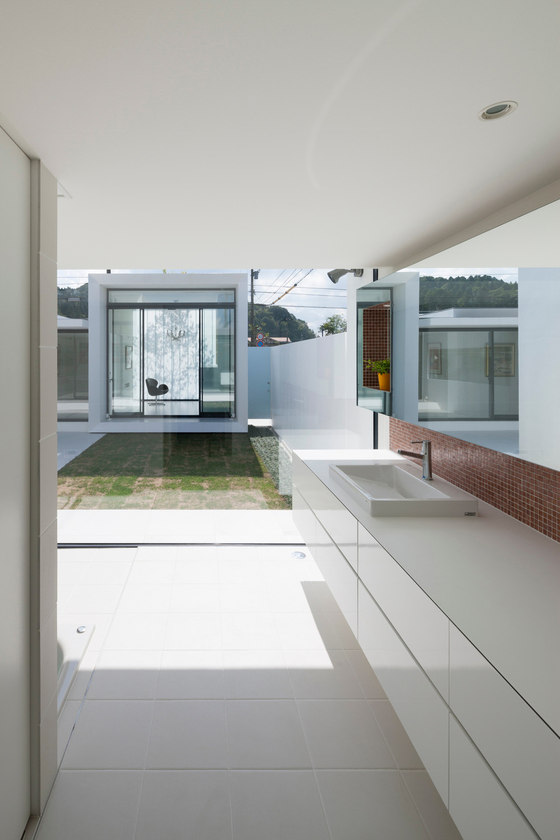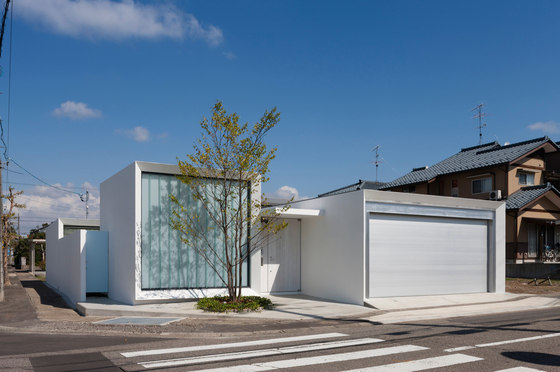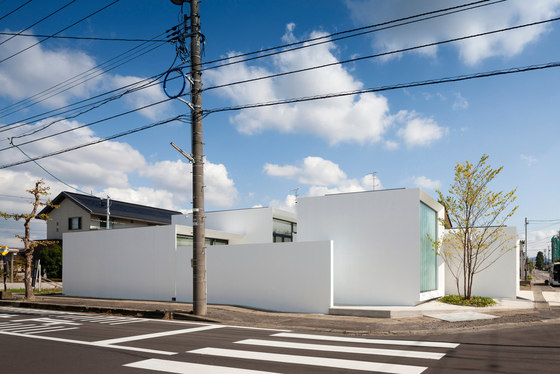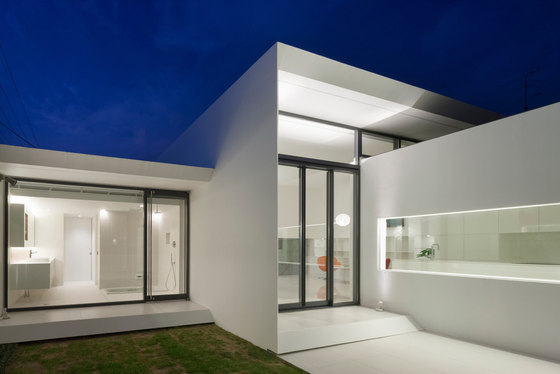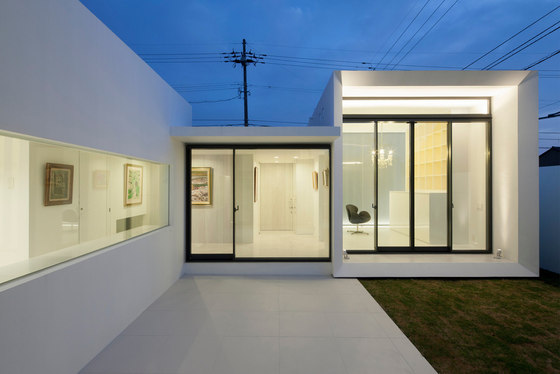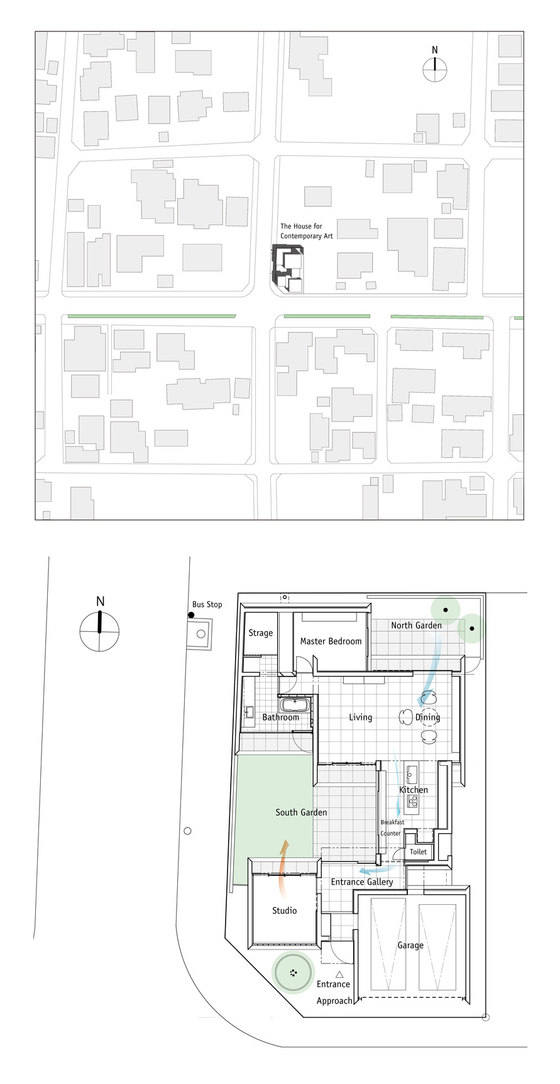This is an award-winning project designed by Ryumei Fujiki and Yukiko Sato who are famous for "Aqua-scape" and "Artificial Topography". It has been granted the Golden A' Design Award Winner for Architecture, Building and Structure Design Category in 2015-2016. F.A.D.S designed this home for an art appreciator and amateur artist who wanted a “house like an art museum.” Planned with careful consideration for air circulation as well as for the harsh, snowy climate of the Japan Sea coast, the structure is composed of white boxes of varying scale that frame spaces like pictures.
Seamless Spatial Composition
You can circulate through the spaces in this home looking at the owner’s collection of artwork just as if you were passing through galleries in a museum. The structure fulfills the client’s request that passersby not be able to see inside, while also letting in fresh air and sunlight and achieving a well-sequenced, multi-layered spatial composition. Although the home is made up of a number of cubes of different sizes, the architects tried to create a structure that was as seamless as possible, with the spaces forming a single connected unit. In addition, the client wanted to be able to draw in both the garden and the studio, so the architects included a courtyard that could be accessed directly from the north-facing studio.
Client’s Collection
It goes without saying that the top priority was fulfilling the client’s wishes. The architects began by measuring the many works of art that the client had created and collected over the years. Next, they held a number of planning meetings to discuss where to display each work of art, among other issues. For instance, they determined the height of the living room ceiling based on the wall size that could accommodate a painting measuring over 1.5 x 1 meter. In addition to the art collection, the client also has a large number of old records, mostly jazz. It was important to figure out a way to display them so their jackets would appear to best advantage.
Response to the Environment
The architects considered very well the response to and interaction with the environment. The first thing was dealing with the snow. In regions with heavy snow, the shape of the roof is very important. Many homes are built on the assumption that someone will shovel the snow off the roof, but that’s a lot of heavy work, and dangerous. The initial proposal was for a budget-conscious, wood-framed structure with a gently-sloping roof that would naturally shed snow. In the end, however—and in part because of the client’s input—the architects decided on a flat roof with no parapet that would stay relatively snow-free because of wind action. The second challenge was coming up with a plan that would create good airflow within the structure. To encourage natural ventilation, they created a temperature differential by designing two gardens, one on the south side that would warm up easily, and one on the north side that would remain cool. This is a traditional design method used in Kyoto townhouses.
The Philosophy
In this project, the first priority was fulfilling the client’s wishes, but they don’t believe the architect’s role stops there. Architects must also respond to various societal problems with bold imagination. For example, they need to fundamentally rethink architectural practices in response to the world’s worsening environmental problems. They are looking to nature, or natural systems, for hints as to how to do that. It’s not simply about finding clever ways to reduce energy use, but rather about architecture itself growing closer to nature. It’s impossible to fully realize this ideal in a single project, but what they hope to do in our future work is to steadily experiment with a variety of approaches, and through that process to approach a new kind of architecture.
F.A.D.S - Fujiki Architectural Design Studio
